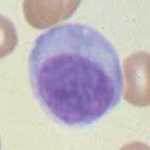
This webpage was produced as an assignment for an undergraduate course at Davidson College.
Humoral Immune Response
Because Legionella pneumophila bacteria live and proliferate inside human phagocytes, the humoral immune response must be strong and rapid in order to eliminate the pathogen when it is exposed outside of the cell. The humoral immune response is regarded as the least effective of both adaptive and innate immunity in suppressing a L. pneumophila infection (Fraser, 1986). Research has shown, though, that dendritic cells play a role in initiating a humoral response to such an infection.
When most phagocytes engulf a foreign particle its first action is to destroy the pathogen. Dendritic cells do destroy the pathogen, but they also process and present foreign cells on their major histocompatibility complexes more than any other phagocytic antigen presenting cell. In presenting peptides or sugars from the pathogen, DCs facilitate the activation of the adaptive and humoral responses. After L. pneumophila are phagocytosed by DCs, the are processed and then presented by MHC class II molecules, which enable T cells and B cells to recognize and bolster the attack on the pathogen. The B cells eventually produce antibodies specific for the L. pneumophila bacteria, which circulate throughout the body but rarely, encounter the pathogen because of its ability to hide within phagosomes (Breiman and Horwitz, 1987).

Antibody-producing plasma B cell whose immunoglobulin attack is usually ineffective against intracellular-dwelling L. pneumophila.
Image in public domain.
Several experiments have shown the unique role of dendritic cells in activating the humoral immune response. In the experiments, both live and dead samples of L. pneumophila were injected into naïve mice whose lymphocytes and DCs had not yet matured (Kikuchi et al., 2004). When infused with the dead bacteria, a complete humoral response was activated which resulted in significant protection against the deadly sickness. After this infusion, there were antibodies in the mouse serum specific to L. pneumophila. The introduction of live bacteria had a distinctly different result in the naïve mice. Macrophages played the largest role in phagocytosing and destroying the pathogen. Macrophages are effective destroyers of pathogens, but are much less adept at presenting antigen to T and B cells. Most dendritic cells did not even reach complete maturity in the presence of live cells because they were not numerous enough to encounter the pathogen. As a result, the humoral immune response to live cells was much less complete and effective than with the introduction of dead cells (Neild and Roy, 2003).
Dendritic cells engulf L. pneumophila when the bacteria are outside of their host intracellular compartments. Dead cells are almost always exposed in this way since they are immobile and no longer able to avoid being lysed by phagocytes. Therefore, DCs can easily phagocytose, process, and present L. pneumophila peptides, which leads to B cell activation and the production of antibodies (Kikuchi et al., 2004). When live cells are involved, only a small proportion of the pathogens are outside of their intracellular compartments at a given time, so a much smaller number of DCs are able to act on the cells. The absence of pathogen outside of the phagosomes accounts for the ineffectiveness of humoral immunity in response to L. pneumophila infection. The same phenomenon can be seen in the work of Blander and Horwitz (1991) who found that significant immunological memory was established when L. pneumophila membranes were injected in host guinea pigs. Because these membranes remained outside of the host cells, a large number of APCs could act on them and, in turn, activate T and B cells. While such humoral immunity works experimentally or in an inactive vaccine, the humoral response is generally ineffective against an actual infection (Breiman and Horwitz, 1987).
Works Cited
Blander SJ, and MA Horwitz. 1991. Vaccination with Legionella pneumophila membranes induces cell-mediated and protective immunity in a guinea pig model of Legionnaire’s disease. J. Clin. Invest. 87:1054-1059.
Breiman RF and MA Horwitz. 1987. Guinea pigs sublethally infected with aerosolized Legionella pneumophila develop humoral and cell-mediated immune responses and are protected against lethal aerosol challenge: a model for studying host defense against lung infection caused by intracellular pathogens. Journal of Experimental Medicine 164:799-811.
Fraser DW. 1986. The peculiarities of “Legionella”. Proceedings of the American Philosophical Society 130:330-335.
Kikuchi T, Kobayashi T, Gomi K, Suzuki T, Tokue Y, Watanabe A, and T Nukiwa. 2004. Dendritic cells pulsed with live and dead Legionella pneumophila elicit distinct immune responses. The Journal of Immunology 172:1727-1734.
Neild AL and CR Roy. 2003. Legionella reveal dendritic cell functions that facilitate selection of antigens for MHC class II presentation. Immunity 18:813-823.